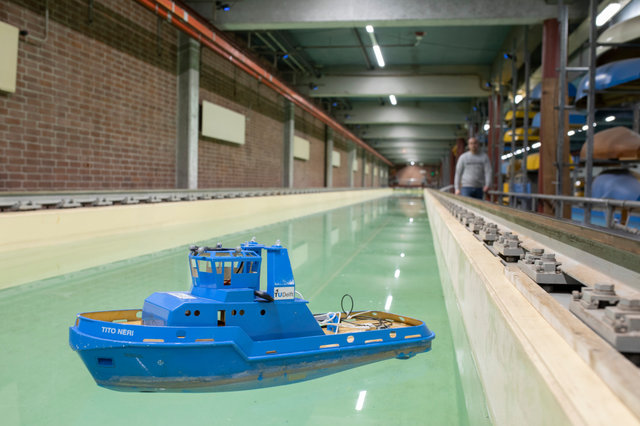AmmoniaDrive
By Julian Atchison on July 14, 2022
Combining fuel cells & combustion engines for maritime propulsion
The Dutch Research Council (NWO) has awarded over €2 million to an academic-industry consortium led by the University of Amsterdam and TU Delft. The partners will determine the feasibility of combining ammonia-fed solid-oxide fuel cells with internal combustion engines for maritime propulsion. The advantage of this setup is explained by one of the project’s key researchers, Peter de Vos from TU Delft:
What’s innovative about AmmoniaDrive is, firstly, using ammonia as a fuel, and secondly combining a high temperature fuel cell with an internal combustion engine. The idea is to feed ammonia into one end of the fuel cell, producing electricity and hydrogen at the other end. The hydrogen is used as a promoter fuel in the internal combustion engine to deal with the challenging combustion properties of ammonia.
Peter de Vos quoted in “NWO Perspectief Award for Project using Ammonia as Fuel for Heavy Transport”, TU Delft, 7 June 2022
Learn more in the video below:
Maritime propulsion
As ammonia-powered maritime engines come closer and closer to commercialisation, hybrid and fuel cell-based propulsion systems are also on the horizon:
- Metacon delivered a prototype of their containerised, on-water ammonia cracking unit in May, which will be incorporated into Pherousa’s PEM fuel cell-based maritime propulsion system.
- AFC Energy has designed an integrated cracking and alkaline fuel-cell system to power the new ZeroCoaster vessel, a short-range cargo carrier.
- And of course the Viking Energy project, which will retrofit an existing vessel with a fuel cell propulsion system by 2023. Alma – who is developing the fuel cell technology to be used in the Viking Energy retrofit – has also entered into an agreement to retrofit two existing offshore supply vessels with ammonia-fed fuel cells: Eidesvik’s Viking Lady and Aker BP’s NS Fraya.
